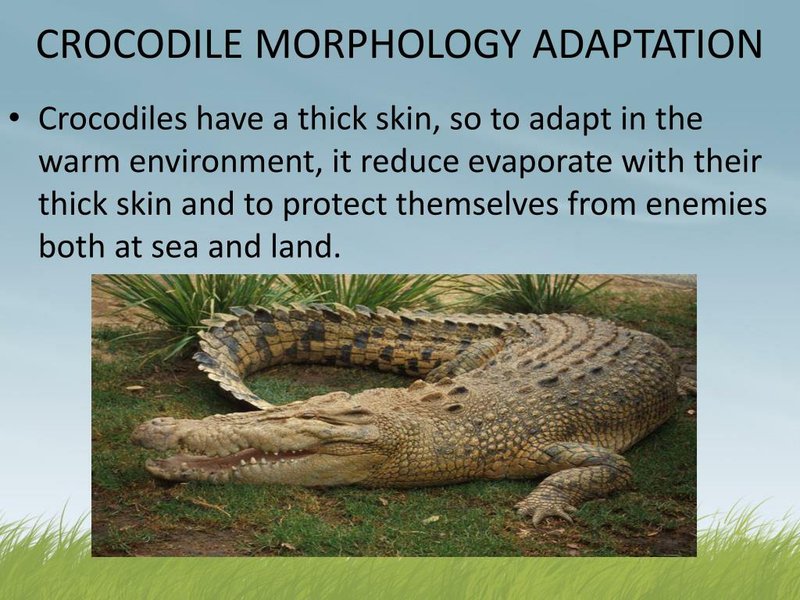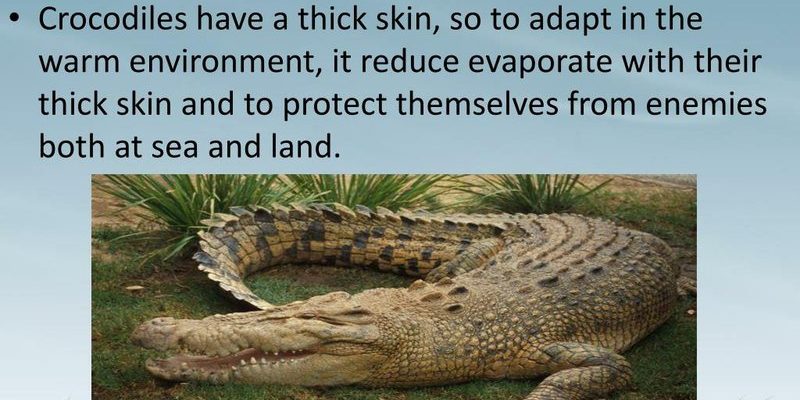
Imagine a rugged individual who can handle anything life throws at them. That’s how the saltwater crocodile operates in its habitat, which ranges from brackish estuaries to the vast ocean. With its tough skin, powerful jaws, and keen senses, it’s no wonder that this reptile has remained relatively unchanged for centuries, evolving to meet the challenges of its environment. Let me explain some of the unique adaptations that make the saltwater crocodile a truly remarkable survivor.
1. Exceptional Camouflage
One of the saltwater crocodile’s most impressive adaptations is its ability to blend into its surroundings. These reptiles are often colored in shades of green and brown, which resemble the muddy waters and mangroves they inhabit. When they’re lying still, they can be nearly invisible, making it easier for them to ambush unsuspecting prey.
This adaptation not only aids in hunting but also protects them from potential threats. Predators, including humans and other larger animals, might not even realize a saltwater crocodile is nearby. This camouflage is similar to a chameleon, which changes colors to match its surroundings. It’s a classic survival tactic that has worked wonders for the crocodile.
2. Powerful Jaw and Bite Force
Have you ever thought about what makes a saltwater crocodile such an effective predator? A key factor is its incredibly powerful jaw. The force of a saltwater crocodile’s bite can exceed 3,000 pounds per square inch, making it one of the strongest bites in the animal kingdom. This means when it catches its prey, there’s hardly any escape.
The strong jaws are perfect for crushing shells of turtles or gripping onto large mammals that venture too close to the water’s edge. Think about it this way: if you had the ability to crush a watermelon with a single bite, you’d certainly have an advantage at snack time! This strength ensures that when they do make a catch, it’s a successful one.
3. Adaptability to Saltwater
Despite its name, the saltwater crocodile isn’t just a creature of the sea. These reptiles are highly adaptable and can thrive in both freshwater and saltwater environments. Their bodies are equipped with specialized glands that help to excrete excess salt, allowing them to drink seawater without getting dehydrated.
This ability opens up a vast range of habitats, from rivers and swamps to coastal lagoons. It’s like having a multi-purpose tool in your toolbox that lets you tackle different tasks seamlessly. This adaptability allows them to exploit various food sources and avoid competition with other predators.
4. Incredible Sense of Hearing and Vision
The saltwater crocodile also boasts an impressive array of senses. Its hearing is incredibly acute, allowing it to detect sounds from a great distance. This is crucial for hunting, as it can pick up the faintest noises of potential prey. Imagine being able to hear a whisper from miles away—now that’s some serious skill!
In addition to hearing, their eyes are well-adapted for both day and night vision. While hunting at dusk or dawn, when many prey species are most active, their eyes can see in low-light conditions. They even have a third eyelid that protects their eyes while they’re underwater, which is pretty handy!
5. Renewable Energy Storage
One of the lesser-known adaptations of the saltwater crocodile is its ability to conserve energy. These reptiles are ectothermic, meaning they rely on external sources to regulate their body temperature. When they’re basking in the sun, they can absorb heat, which fuels their activity later on.
This energy conservation is vital for survival, especially in harsh environments where food may be scarce. Think of it like a rechargeable battery—when the sun is shining, they’re soaking up energy to use when the sun isn’t around. This ability allows them to be efficient hunters even during tough times.
6. Parental Care and Nesting Behavior
Another fascinating aspect of the saltwater crocodile’s adaptation is its approach to parenting. Unlike many reptiles that lay their eggs and leave, saltwater crocodiles exhibit a level of parental care that’s quite remarkable. Female crocodiles will guard their nests closely, ensuring their eggs are safe from predators.
Once the eggs hatch, the mother will transport her young to nearby water, gently carrying them in her mouth. This behavior increases the odds of survival for the hatchlings, showing the crocodile’s instinct to nurture its young. It’s a lovely reminder that even the fiercest predators have a soft spot for their offspring.
7. Longevity and Life Cycle
Saltwater crocodiles have impressive life spans, often living for several decades. In the wild, they can live to be around 70 to 100 years old! This longevity is a huge advantage since it allows them plenty of time to reproduce and increase their population.
Their life cycle begins with the female laying about 20 to 60 eggs in a nest made of vegetation. After hatching, the young crocodiles are on their own, but some may stay close to their mother’s territory for a bit. This long life means that saltwater crocodiles can contribute to their ecosystem over many years, helping to keep populations of other species in check.
8. Conclusion: A True Survivor
The saltwater crocodile’s adaptations make it a fascinating survivor in its environment. From its incredible camouflage and powerful bite to its ability to thrive in diverse habitats, this reptile showcases the artistry of evolution. It’s a reminder of how life can persist and adapt, no matter the challenges.
Think of the saltwater crocodile as a symbol of resilience, thriving in both brackish and salty waters, showcasing nature’s brilliance. So, the next time you see a picture of this magnificent creature, remember all the unique adaptations that help it survive—and thrive—in the wild.

